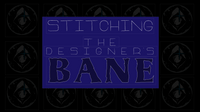
Welcome to the Dojo!
Metal Ninja Studios is dedicated to providing free, high quality education about the comic book creation process. Topics include writing, lettering, production, print prep, and more!
 Learn More
Learn MoreRecent posts
-

-
 Why Colors Are Important In Comic BooksBy Travis GibbDecember 24, 2023
Why Colors Are Important In Comic BooksBy Travis GibbDecember 24, 2023

Gearing Up for Comic Book Creator Interviews
Essential Tools and Tips
by Blake Morgan
As a comic book creator, engaging in interviews is an excellent opportunity to promote your work, connect with your audience, and build a strong presence within the comic book community. Whether it's a live discussion or a pre-recorded conversation, ensuring that you sound professional and clear is paramount. While you don't need to break the bank on expensive equipment, a few strategic gear choices can significantly enhance your interview experience.
First up, the easiest thing you can do is to get a gaming headset. This is the cheapest way to combine your headphone and audio needs. If you start looking at gaming headsets, you’ll quickly notice some aren’t very cheap. You could spend hundreds of dollars for simulated spatial audio or surround sound, wireless connectivity, and those pretty RGB lights. If you want to go crazy, go crazy. However, for around sixty bucks you can snag a renewed HyperX Cloud Alpha - Gaming Headset, which has decent cans, a solid mic, and a steady, wired connection.
Amazon - HyperX Cloud Alpha - Gaming Headset
That’s all you need. Sure, you may not look as cool as you want with a big gaming headset strapped to your head, but when you’re talking about your comic book and why people need to buy it, you’ll sound clear, and that confidence in your book, that excitement for its release, that will come through clearly as well for the audience.
For those looking to up their audio game a little, you may want a dedicated microphone, and you have a ridiculous amount of options. To start, you’ll need headphones. Then, you need to decide if you want a traditional microphone with an XLR cable or a USB microphone, and after all of that, you may want to think about a better camera for video chatting.
Headphones:
The first step to ensuring clear audio quality is investing in headphones. They play a crucial role in preventing echoing or slapback, which can otherwise distract both you and your audience. You don't need high-end studio-quality headphones for interviews; a simple pair of earbuds or headphones, wired, wireless, or even the free pair that came with your last cell phone, will suffice. Here are a few recommendations:
Sony MDR7506 Professional Large Diaphragm Headphone: Reliable and reasonably priced at around $85.
Amazon - Sony MDR7506 Professional Large Diaphragm Headphone
Soundcore by Anker Space Q45 Adaptive Active Noise Canceling Headphones: Great for streaming and interviews, offering quality at an affordable price, typically around $150 but available on deals.
Amazon - Soundcore by Anker Space Q45 Adaptive Active Noise Canceling Headphones
FiiO FH3 Wired Earbuds: Comfortable and decently priced at approximately $100, providing quality without the discomfort of over-ear headphones.
Amazon - FiiO FH3 Wired Earbuds
OneOdio Wired Over Ear Headphones: A budget-friendly option at about $35, offering good sound quality.
Amazon - OneOdio Wired Over Ear Headphones
Microphones:
While the built-in mic on your computer or phone can do the job, upgrading to a dedicated microphone enhances audio warmth and clarity. Here are some recommendations:
USB Microphones: Consider the Blue Yeti ($90), Audio Technica ATR2100x-USB ($70), or the Blue Snowball iCE ($50) for better audio quality without breaking the bank.
XLR Microphones: For a step up, explore the Shure SM57 ($100) or RODE’s PodMic ($100) for improved audio quality.
PRO Tip: snag a pop filter to attach to your new microphone. There are a ton out there, but don’t spend more than $15.
Audio Interfaces:
If using an XLR microphone, you will need an audio interface to convert the signal traveling through the XLR cable to USB. Investing in an audio interface like the Focusrite Scarlett Solo (around $100) ensures seamless connectivity with your computer without compromising audio quality or latency.
Unfortunately, with a lot of these microphones, you’ll also need an in-line decibel booster. What this does is amplify your signal so that you don’t have to crank up your gain. When your gain is too high, it gets noisy. You don’t want noisy. You’re not spending all this money for noise. The go-to amplifier is a Cloudlifter, and it’s about $150.
Video:
Improving video quality is essential for virtual interviews. Upgrading from built-in webcams to after-market webcams like the Logitech Brio 4K Webcam ($130) or Elgato Facecam ($150) can significantly enhance video clarity. If you’re looking to shave off a few bucks here, the Logitech StreamCam runs for about $100. This was the camera I started streaming with.
Lighting:
Invest in a $30 Ring Light to improve your on-screen appearance, making your face more visible and enhancing video quality. This will also help keep your camera focused.
PRO Tip: avoid being washed out by the bright light by aiming the light across your face, not directly at it.
Final Thoughts:
Yes, these prices add up, but as I said initially, you don’t have to get the most expensive options, but when you start doing a lot of shows and interviews, or maybe even start your own platform to promote yourself and the community, you may want to consider more reliable products. You can budget here and there and save money, but with audio, it’s important to not always select the cheapest option. With technology, you often get what you pay for.
Investing in quality gear boosts your presentation and leaves a lasting impression. Remember, while equipment matters, your passion and knowledge about your comic book are equally vital. Be yourself, engage passionately about your work, and enjoy sharing your journey during interviews. Your audio and video setup will not only impress hosts but also engage audiences effectively. Cultivate a fun, engaging, and knowledgeable persona during interviews, and your success will speak for itself, garnering invitations to more shows.
For further queries or to share your experiences with the recommended gear, drop us a comment or connect through social media. Good luck with your interviews and future comic book releases!


















